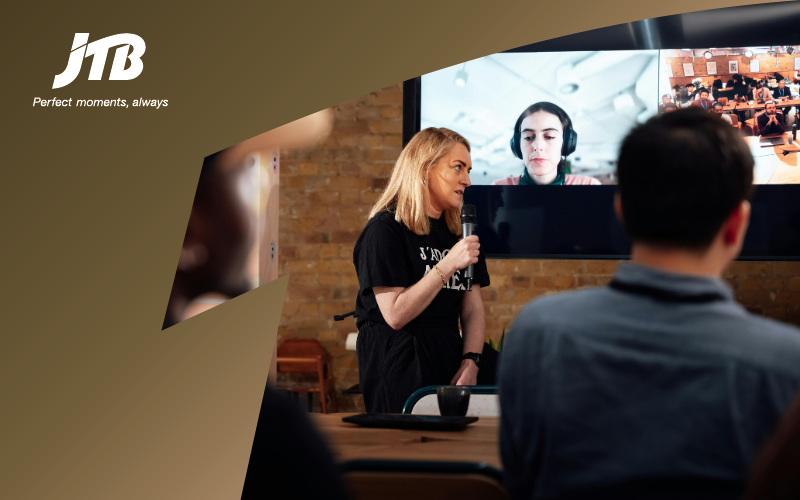In today’s business world, corporate events are no longer just “nice-to-have” networking opportunities; they are strategic investments. Whether it’s a leadership summit, client engagement program, or global conference, companies expect every event to deliver measurable outcomes: stronger relationships, enhanced brand reputation, innovation exchange, and ultimately, revenue growth.
But the path from idea to impact can be complex.
Without a clear framework, events risk becoming logistical exercises rather than strategic levers. That’s why building a master checklist that spans planning, execution, and post-event evaluation is critical.
In this article, we break down a step-by-step guide to ensure your next corporate event not only runs smoothly but also delivers long-term business value.
Step 1: Pre-Event Planning – Define Success Before Day One
The groundwork of any successful event is laid long before the first attendee walks through the door.
1.1 Define Clear KPIs and Business Goals
- Are you aiming to generate leads, strengthen client trust, build employee engagement, or launch a product?
- Translate broad objectives into measurable metrics (e.g., number of C-level leads generated, satisfaction scores, media coverage achieved).
According to a 2023 EventMB report, 80% of event marketers believe defining KPIs upfront is the single most important factor for proving ROI.
1.2 Build a Realistic Timeline
- Start with “must-haves” (venue booking, speaker confirmation, sponsor onboarding).
- Layer in milestones for creative, tech setup, and regulatory approvals.
1.3 Budget With Transparency
- Include both direct costs (venue, catering, AV, travel) and indirect costs (man-hours, marketing, opportunity costs).
- Use technology platforms like JTB Connect to track expenses in real time.
Step 2: During the Event- Create Experiences That Resonate
Execution is about more than logistics , it’s about crafting experiences that engage, educate, and inspire.
2.1 Optimize the Attendee Journey
- Ensure seamless check-in via QR codes or mobile apps.
- Ensure seamless check-in via QR codes or mobile apps.
- Provide personalized agendas powered by event tech.
2.2 Leverage Technology
- Hybrid participation options (virtual streaming, breakout rooms).
- AI-driven matchmaking for networking.
- Real-time engagement tools: live polls, social walls, gamification.
2.3 Collect Feedback in the Moment
- Don’t wait until after the event.
- Use mobile push surveys, QR-linked polls, or interactive kiosks.
- Capture both quantitative data (ratings, participation) and qualitative insights (comments, suggestions).
Insight: According to Cvent’s 2023 Global Planner Sourcing Report, 59% of event planners are now prioritizing sustainability and attendee wellbeing as part of the on-site experience.
Step 3: Post-Event- Prove Value, Learn, and Build Loyalty
What happens after the event is just as important as the event itself.
3.1 Measure ROI Beyond Attendance
JTB’s proprietary ROI model looks at multiple dimensions:
- Cost savings (e.g., negotiated vendor rates).
- Time efficiencies (hours saved via automation).
- Engagement metrics (app usage, session participation).
- Business outcomes (pipeline value, deal progression).
The Global Business Travel Association (2022) found that organizations with mature Strategic Meetings Management (SMM) programs save 22.7% on meetings spend on average.
3.2 Host a Team Debrief
- Review successes, challenges, and attendee feedback.
- Document learnings for future events.
3.3 Nurture Attendees Post-Event
- Share recordings, highlight reels, or knowledge packs.
- Share recordings, highlight reels, or knowledge packs.
- Engage with attendees on LinkedIn or via personalized follow-ups.
- Extend the event’s impact by building an online community or scheduling post-event webinars.
How JTB Ensures Value-Driven Execution
At JTB India, we believe successful events require a blend of strategic alignment, flawless execution, and future-ready technology.
Our approach includes:
- JTB Connect Platform: Real-time budget tracking, AI-driven venue selection, attendee analytics.
- Sustainability Focus: Partnering with eco-certified venues, reducing waste, and calculating carbon footprints.
- Risk Management Framework: Flexible contracts, global monitoring, and hybrid-ready models for business continuity.
- Cultural Intelligence: Leveraging JTB’s global-local expertise to design events that resonate across geographies.
This holistic approach ensures every event becomes a strategic asset, driving ROI, mitigating risks, and amplifying brand impact.
Download our MICE Guide for Hosting Succesful Meetings and Events!
Your Master Checklist for Events That Deliver Results
- Pre-Event: Define KPIs, goals, timelines, and budget.
- During Event: Focus on attendee experience, leverage tech, and capture real-time feedback.
- Post-Event: Measure ROI, conduct debriefs, and build long-term engagement.
Conclusion: Events as Strategic Growth Engines
Corporate events are evolving into strategic growth engines that extend far beyond the conference hall. By following a structured checklist, from pre-event KPIs to post-event ROI analysis, organizations can transform events into platforms for connection, learning, and measurable business impact.
As JTB India’s work demonstrates, the real difference lies in a combination of global expertise, local insight, and data-driven strategy. With the right approach, your next event won’t just be remembered, it will deliver results that matter.

















